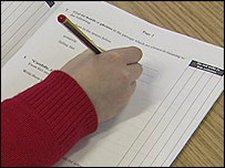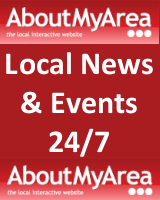Wirral LEA 11+ Question Types 16, 17 & 18
| Author: Mike Edwards | Published: 19th October 2010 09:20 |
The seventh in a series of articles by Mike Edwards of The Tutors, relating to the Wirral LEA 11+ Method & Technique Course.
I have previously posted methods and techniques for question types 1-15, check the links at the end of this article. The last articles in the series will focus on the six question types that were added to the original fifteen about six years ago. These are the questions that many children have difficulty with and that do not appear in the product ranges of all 11+ authors.
Question Type 16 Opposite Meaning
 In each question, find the two words, one from each group, that have the most opposite meaning. Mark both answers on the answer sheet.
In each question, find the two words, one from each group, that have the most opposite meaning. Mark both answers on the answer sheet.
Example
(up run walk)
(smile laugh down)
The question states that you need to find two words that are opposite in meaning. It is important to read the question. There is a similar question type that asks you to find two words that are closest in meaning, so be careful.
On the answer sheet you are given six words in two groups of three.
A up D smile
B run E laugh
C walk F down
Sometimes it is easy to spot the answer, up and down. These words are most opposite in meaning compared to all the alternatives.
There are nine possible answers
1 up smile 4 run smile 7 walk smile
2 up laugh 5 run laugh 8 walk laugh
3 up down 6 run down 9 walk down
You can eliminate options 1, 2, 4, 5 7, 8 and 9 because these are obviously not opposites. You are left with 3 and 6.
Optiion 6 run down is a word association but they are not opposites.
The most opposite words are up and down
Sample questions
(push plod plug)
(pour pale pull)
(stale swell swift)
(slow sure sign)
(dense delve doubt)
(solid compact sparse)
(boredom uniform reliable)
(unequal monotony consistent)
Question Type 17 Complete the Sum
In each question, find the missing number that will complete the question correctly and mark it on the answer sheet.
Example
6 + 7 = 8 + (?)
All the questions can be answered by working from left to right.
Working from the left
6 + 7 = 13
So the right hand side of the sum must also equal 13
What number do you need to add to 8 to get 13?
8 + (5) = 13
So the correct answer is 5
On the answer sheet you are given 5 options but I have left them out because it is important that the student can answer the question without them.
Example 2
150 / 25 + 8 = 35 / 5 x (?) (the / sign is divide by)
Working from left to right, write down your working out as you go.
150 / 25 = 6
6 + 8 = 14
So the right hand side of the sum must equal 14
35 / 5 = 7
7 x (?) = 14
What number must you multiply by 7 to get 14?
7 x (2) = 14
So the correct answer is 2
Sample questions
8 + 7 = 9 + (?)
17 + 6 + 9 = 22 + (?)
28 / 4 + 18 = 7 x 7 - (?)
92 / 4 + 16 = 24 x 3 - (?)
Question Type 18 Related Numbers
In these questions, the middle number in the last group is made up in the same way as the middle number in the first two groups. Find the missing number and mark it on the answer sheet.
Example
(7 [ 15 ] 8) ( 9 [ 14 ] 5)
(6 [ ? ] 5)
You need to do something to 7 and 8 to get 15 (15 is the target number)
7 + 8 = 15
Can you do the same to 9 and 5 to get 14?
9 + 5 = 14
So the method is; add the two outside numbers
6 + 5 = 11
So the correct answer is 11
As with other question types I have left out the 5 multiple-choice options
Variances
There is a big range of variances for this question type from single to double function questions here are some examples
(36 [ 6 ] 6) divide
(7 [ 26 ] 6) add then double
(14 [ 12 ] 10) add then half
(6 [ 15 ] 5) multiply then half
Sample questions
(8 [ 21 ] 13) (11 [ 20 ] 9)
(16 [ ? ] 7)
(4 [ 36 ] 9) (6 [ 36 ] 6)
(8 [ ? ] 4)
(5 [ 16 ] 6) (9 [ 30 ] 12)
(8 [ ? ] 16)
(4 [ 16 ] 32) (7 [ 8 ] 28)
(8 [ ? ] 64)
Mike Edwards
Related Content:
The Wirral 11+ Selection Test
Wirral 11+ Question Types 1,2 & 3
Wirral 11+ Question Types 4,5 & 6
Wirral 11+ Question Types 7,8 & 9
Wirral 11+ Question Types 10,11 & 12
Wirral 11+ Question Types 13 & 14
Wirral 11+ Question Type 15
Wirral 11+ Question Types 19, 20 & 21
Report this article as inappropriate
Comments
You need to log in before you can do that! It's only a quick registration process to join the AMA network and completely free.



 Help
Help

 Business Reviews
Business Reviews Loading...
Loading...


 Help
Help